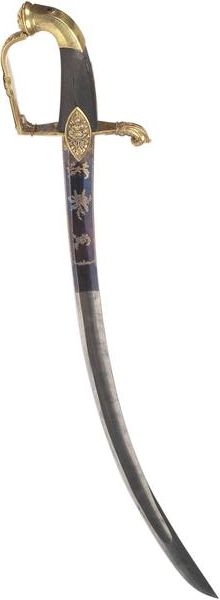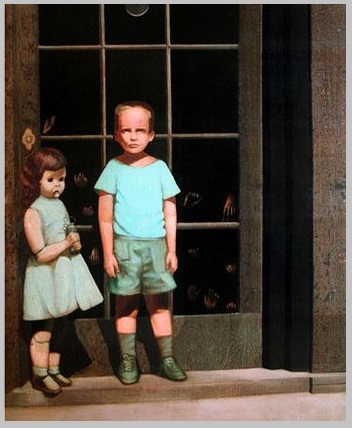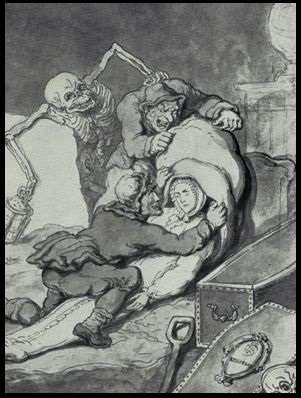Roland and the Ogres
During our last Man Day Dungeon World game, my son Christopher lost another character. His cleric, Brother Hurak, fell in combat against the forces of evil. This week, while we’re on Christmas vacation, Christopher made up his new character, Roland the Paladin, and we decided to take him out for a test drive. I downloaded Michael Prescott’s Tannòch Rest-of-Kings, and started to ask Christopher some questions:
Q. Why are you going back to Tannòch?
A. To visit the nuns who nursed me back to health. Also, to visit the mausoleum to see if it reveals anything interesting about the history of the region.
Q. Why did you need nursing?
A. Injured by cannon shot during a fight against paynim pirates.
Q. Mother Marta doesn’t like you. Why?
A. I offended her somehow. (The nature of the offense remains undefined.)
Q. To get to Tannòch, you have to take a boat from a nearby island settlement. What is that settlement’s name?
A. Pterx.
Roland started on the beach near Pterx. The natives mostly earn their livelihood by fishing. Roland approached the village chief and asked about passage to Tannòch. Robert, the chief, named a price, but Roland confessed he had no coins. He did offer to work for his passage, so Robert introduced Roland to Kemp and his sons, Jethro and Jedd. Kemp told Roland that he could earn his passage by working the following day out of the reef, diving for oysters. Roland agreed and spent a quiet night on the beach.
Early in the morning, Kemp woke Roland, who left behind most of his gear since scalemail and a halberd wouldn’t be much use in an outrigger canoe heading out for oysters. Kemp instructed Roland as the proper use of a sturdy fishing knife and the net-bag tied to his belt. Roland dived with Jethro. The first few dives were uneventful, but during the third dive Roland noticed that Jethro had vanished. Thinking quickly, Roland found Jethro grappling with a deadly hooked octopus in a recessed section of the reef. Roland swam to the rescue, bringing his bear hands to bare against the dangerous cephalopod mollusc. The fight was short and fierce, and Roland drove the creature away, but not before he’d suffered some injuries. Jethro had been hurt badly.
When the group returned to Pterx, news of Roland’s heroic rescue of Jethro spread quickly. He was feted by the locals, hailed as a man of courage and nobility. Chief Robert gave him a finely made scarlet cloak as a gift. The next day, refreshed and ready, Kemp personally rowed Roland out to Tannòch, saying he’d be back in a week to fetch the paladin. Roland climbed up the rugged caldera until the interior saltwater lake came into sight. There, in the lake’s middle, stood Rest-of-Kings. Roland took one of the rowboats tied up at the nearby quay.
Tying off the boat at the base of the stairs leading switchback up to the tower, Roland began the climb. He was about halfway up to the door when a hulking figure, silhouetted by the noonday sun, lurched into view atop the parapet.
“Leave tribute to me, or I’ll kill you and lick your brains from the bowl of your skull!” the figure growled.
“Who are you?” Roland replied.
The figure lobbed a sizeable rock at Roland. The paladin through himself forward, avoiding the stone, which smashed into the stairs behind him. Unfortunately, he landed clumsily, and the impact jarred his halberd from his grasp. The weapon slid over the edge of the stairs, dropping several yards before it wedged in a rocky crack. Roland slid over the edge, dropping after his weapon. Another rock struck him from behind, spinning him into the air. He rolled and bounced, and both he and his halberd splashed into the water below. Standing waist deep in warm saltwater, Roland spotted a sinewy, slick-skinned monstrous humanoid slicing through the water. As it lunged out of the water, claws and fangs bared, Roland snatched up his halberd and attacked. The polearm bit deep into the ogre’s body, but the monster’s momentum slammed Roland hard into the rocks.
Taking stock of his injuries and surroundings, Roland noticed the half-eaten corpse of a nun in the water nearby. The glint of metal in her clenched fingers caught his eye. Roland pried the ring of keys from her dead hand. He also noticed that a deep crevice in the rocks at the waterline led into a cave. Figuring the rock-tosser on the parapet couldn’t hit him if he were underground, Roland entered the cave. He climbed up a bit and found a relatively flat surface on which he could rest. Time passed.
Hours later, Roland lit his lantern and explored deeper into the caves. He eventually found himself in a higher, smaller cave. Part of the cave wall had been dug away, revealing a brick wall, which had been partially breached, presumably by the now-dead dwarf lying under some rubble. Roland squeezed his way through the gap in the wall, finding himself in the mausoleum in the tower’s substructure. It soon became obvious that someone or something had been smashing open the burial spaces and breaking the urns kept therein. Roland soon found the looter, a monstrous, one-eyed ogre. Before Roland could act, a gust of charnel-house wind roared through the chamber, and Roland’s lantern went out, plunging the paladin into absolute darkness. An instant later, the monster lifted Roland and hurled him roughly against a wall. The lantern shattered.
“Give me the diadem of the weylords,” a sibilant voice hissed in the blackness.
Fumbling in the dark for a torch, Roland stalled, admitting he didn’t have the diadem. He asked why it was desired.
“My master, Halad al Bim, promised it to me, but upon his death, it was brought to this place and interred herein.”
Roland remembered that he had seen a tomb marker with Halad’s name engraved upon it. “I can take you there if I can see,” the paladin said.
Shortly, the torch was lit. The monstrous creature, who called itself Stanus Ash-Eater, made promises that Roland knew would not be kept. He also deduced that the monster’s bizarre appearance probably meant that Stanus was not a natural ogre, but had been magically transformed into his current shape. Roland, followed by Stanus, returned to Halad’s tomb marker. The paladin opened it and pulled out the urn. Stanus roared, exhaling noxious black fumes which forced their way into Roland’s lungs, inducing weakness. Roland invoked his divine authority and told Stanus to back off. The ogre retreated, but demanded the diadem. Roland dug into the urn, discovering nothing but ashes.
“It’s not here,” Roland said.
Stanus charged. The fight was brief and bloody. Roland rammed his halberd’s spike into Stanus’s good eye, driving the monster across the room, crushing his skull against the stones. Roland sustained injuries as Stanus’s powerful arms lashed out before the ogre died.
“Oh, thank Cicollius,” said a woman’s voice.
Roland whirled about to see Mother Marta standing near the opposite wall.
“You must help me, Roland,” Mother Marta said. “This ogre is not the only one who….”
Her words trailed off. Roland caught movement out of the corner of his eye. Rising from a pool of Stanus’s blood mixed with funerary ashes was an emaciated figure, covered in gore. Its eyes burned with madness.
“At last, I live again! Return to me my diadem!”
Roland interposed himself between the ghoul and Mother Marta just as the senior nun disappeared into the wall. The ghoul’s powerful, fanged maw crunched into Roland’s right elbow. As the paladin staggered away, the ghoul noisily chewed and swallowed bone and flesh.
“Mother Marta is the one I seek,” it gurgled, and then raced off into the darkness.
Roland, seriously injured, collapsed.
“Get up, Roland,” Mother Marta said, stepping back through the wall. “No time to rest. I cannot evade that creature forever. Take this dagger. You can’t wield that halberd with only one arm.”
Mother Marta bound up Roland’s wounds with special wrappings and poultices, healing some of his lesser injuries.
“How are you able to move through walls? Are you a ghost?”
“Tut, tut, young man. I’m no such thing. I carry with me the collected artifacts stored in Rest-of-Kings, including the periapt of the earthen kings. With it, I move through stone as if it were water.”
“Take me out of here,” Roland demanded.
“It doesn’t work that way,” Mother Marta said. “Now quit your dithering and kill that ghoul.”
With that, she vanished into a wall again. Roland grumbled and set out in the direction the ghoul had run. He found it quickly enough, spotting it in time to avoid its ambush. In a fearsome battle, the pair rolled and grappled, Roland stabbing with the dagger, the ghoul slashing with its fangs and claws. As the silver-bladed weapon bit into the monster, Roland felt it possible to acquire the creature’s knowledge by eating some of it, and that, if he chose, he gnaw off part of the undead horror while fighting. Roland ignored these options, and finally rammed the blade deep into the ghoul’s black, ichor-filled heart.
Mother Marta reappeared again. “Well done, paladin. Well done. Now rest, and let me minister to your wounds.”
More time passed. Mother Marta’s healing arts restored Roland’s strength and healed his elbow, but not without leaving behind some ruddy scar tissue. She explained that three ogres, led by Stanus, attacked Rest-of-Kings several days ago. Most of the nuns were killed when the ogres set fire to the upper floors, which partially collapsed.
“One ogre remains, Roland. You must slay her, but the climb up the parapet will be difficult. She has locked the trapdoor leading up to the parapet from the ruined upper floor.”
Roland produced the key ring. “Will these help?”
“Indeed they will.”
Several minutes later, halberd in hand, Roland was gingerly making his way through the ruined, rubble-choked upper floors. The locked trapdoor was in view. He reached out to grab a bit of cornice, hoping to steady his way along a narrow ledge overhanging a drop of several yards. The cornice crumbled loose under his weight, pulling down a section of the ceiling as well. Roland fell, and a large slab of rock landed on him. As he looked up through the hole in the ceiling, a monstrous hag with nails like iron spikes crawled into view and started to descend spider-like toward Roland.
“Time to lick your brains from the bowl of your skull!”
The ogress pounced, and Roland roared with the effort of hefting the stone slab. It toppled partially onto the ogress. Roland swung his halberd, striking a powerful blow. The ogress hissed in rage and fear, scrambling up the wall toward the hole in the ceiling. Roland hurled his halberd like a spear, but to no effect. The monster vanished from sight, and Roland climbed up after it, but not with its speed and nimbleness. As he emerged through the hole leading up to the parapet, a rock slammed into his hip.
Roland rolled to his feet. The ogress stood on the other side of the tower’s upper spaces, a large rock in each clawed hand. Roland charged. The ogress through the first rock, which Roland blocked with his gauntleted hand. He heard and felt hand bones crack. He swung his good fist at the monster, but it hoisted him overhead. Just as it threw him off the tower’s roof, Roland rammed a brutal jab into the monster’s forehead. Bone collapsed. Eyes bulged and bled. Roland tumbled through the air, catching a projection. His momentum and weight popped his shoulder out of socket. As he blacked out from the pain, he started to fall again.
And then woke with a start in a bed. Mother Marta sat nearby.
“Rest, Roland,” she said. “Fortunately, I was able to use the periapt’s power to help catch you before you fell to your death. Well done, young man. Well done.”




